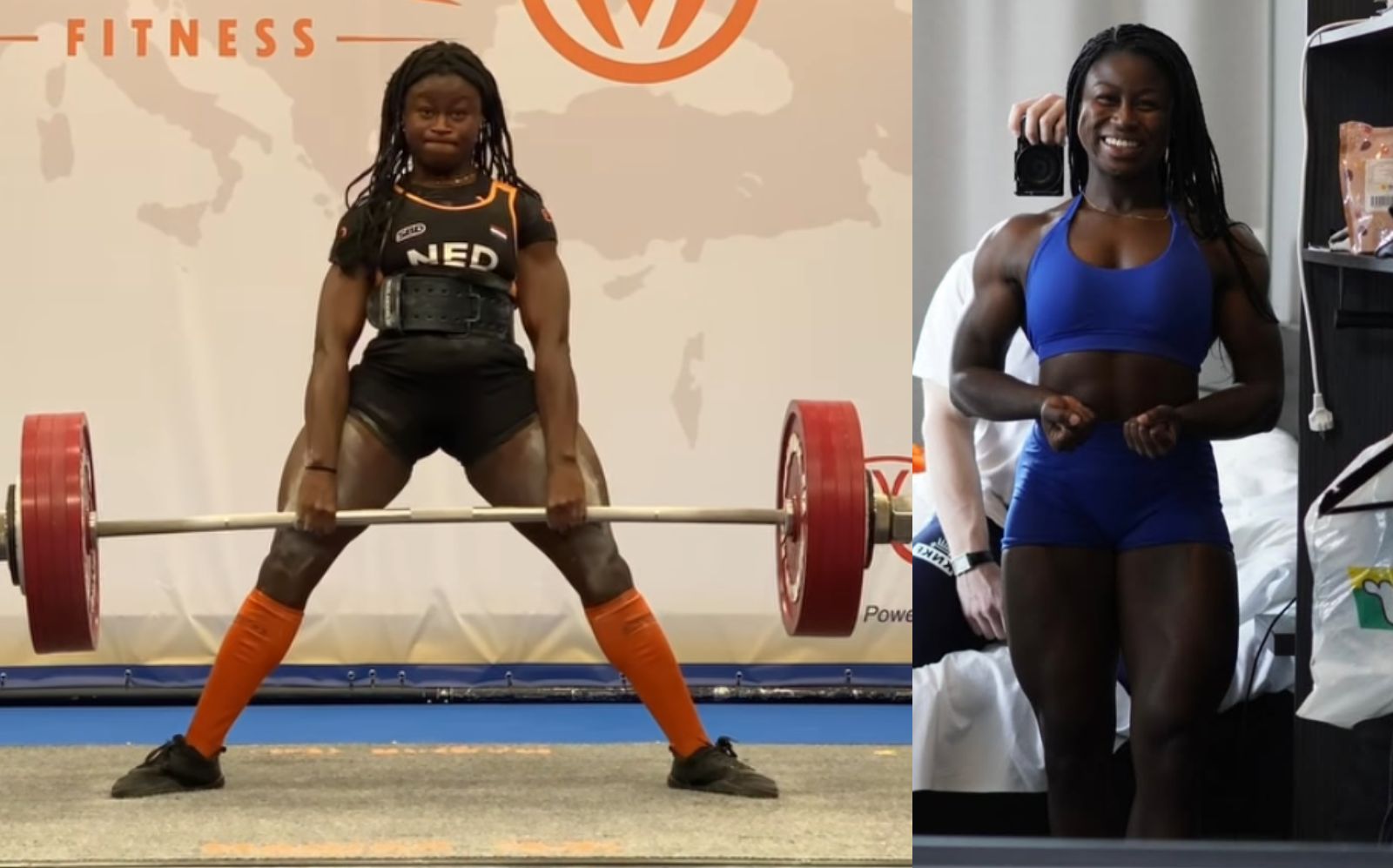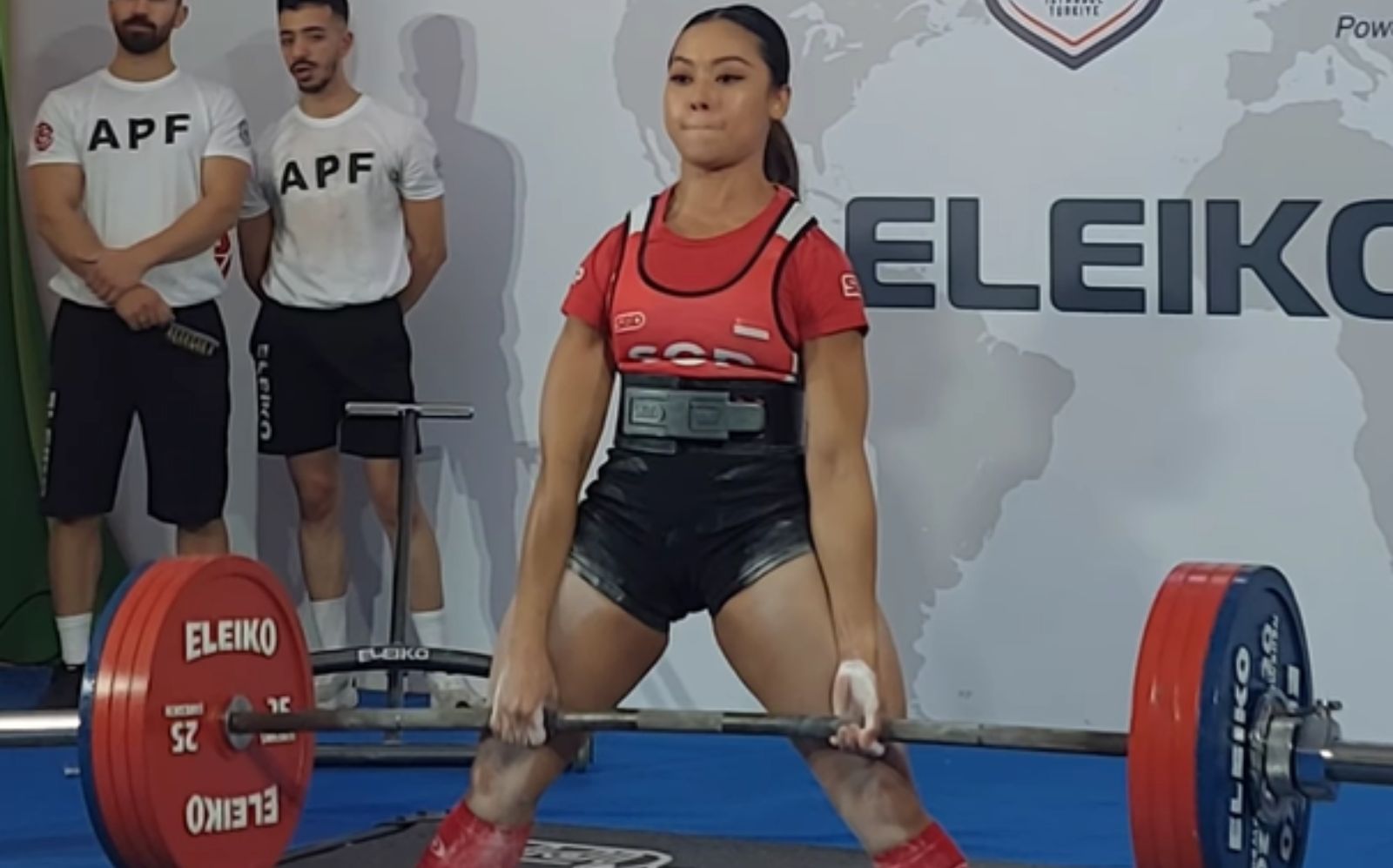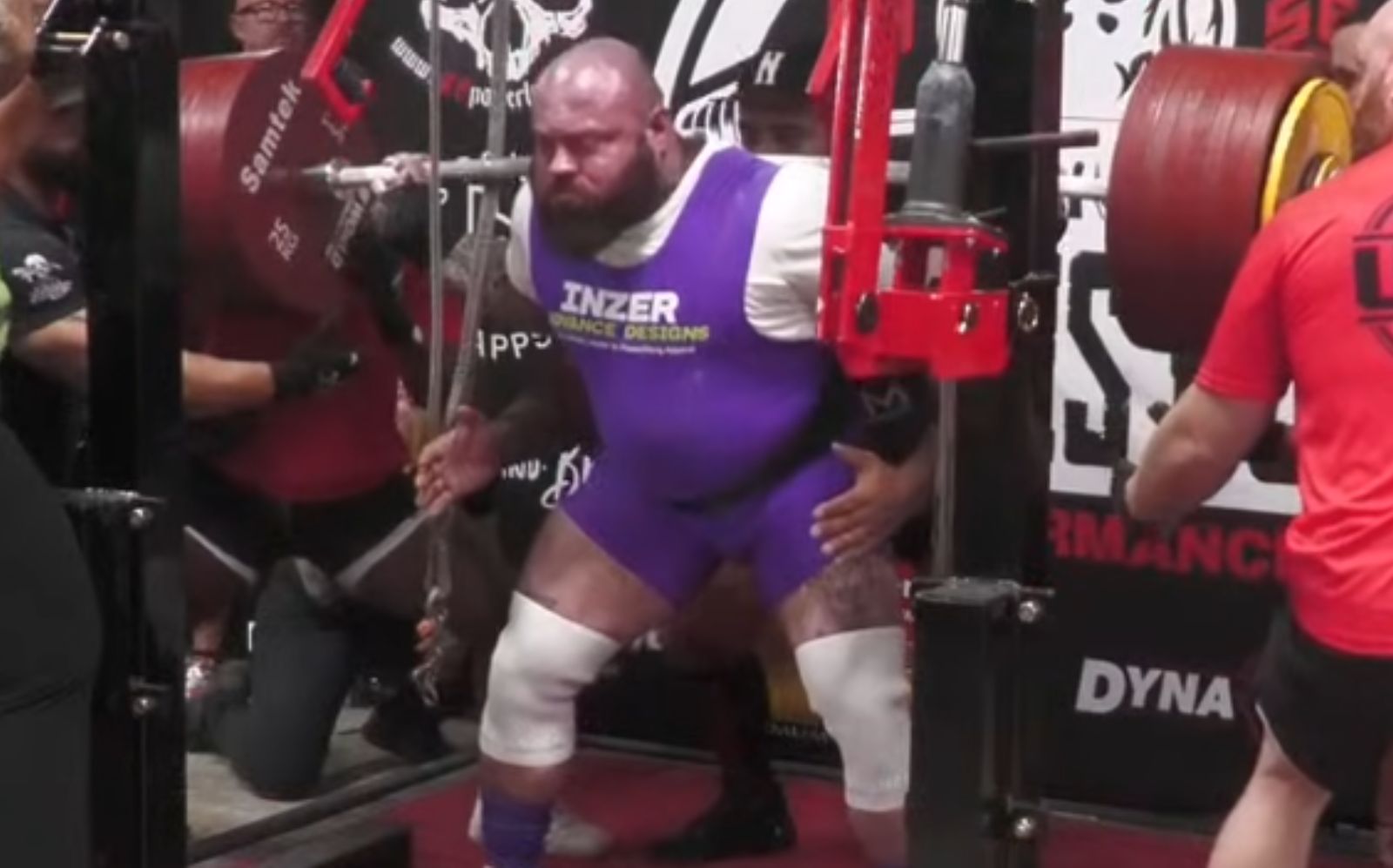Written byChris Stone, PT
Last Updated onJuly 27th, 2021
If you are new to powerlifting or are competing in your first ever competition, you must buy a powerlifting singlet.
Not only are singlets useful for optimizing your performance, wearing the wrong type of singlet in a competition can actually lead to disqualification.
This article will provide all of the essential information on singlets to help you understand the purpose of the singlet and the rules and guidelines around it.
Additionally, it will also review a number of the most popular powerlifting singlets to allow you to make the best choice when purchasing one.
What Is A Singlet?
Across a number of sports, competitors must wear a singlet which is a one-piece, tight-fitting garment.
The singlet, which may be referred to as a “suit”, is essential athletic attire for a number of sports including weightlifting, powerlifting, and wrestling.
Level Up Your Fitness: Join our 💪 strong community in Fitness Volt Newsletter. Get daily inspiration, expert-backed workouts, nutrition tips, the latest in strength sports, and the support you need to reach your goals. Subscribe for free!
Expect expert-backed workouts, nutrition advice, the latest in strength sports, and a whole lot of motivation heading your way.
Most singlets are constructed of materials such as nylon, polyester, and lycra. This makes singlets very tight fitting.
In powerlifting, singlets must be worn during competition. Because they are form-fitting, it allows the judges to clearly assess your movement.
During the squat, bench, and deadlift, there are a number of criteria that must be met.
In the squat, the lifter must descend until the hip joint is lower than the top of the knees before driving out of the squat. For the bench press, the bar must make contact with the chest before being pressed. Additionally, at the top of the movement, the elbows must be locked.
With the deadlift, the competitor must fully lock out; this involves fully extending the hips, pulling the shoulders back, and locking the knees.
By wearing a singlet, the judges can clearly check the lifter’s movement and determine whether or not to give a pass or a fail.
However, singlets may also give the lifters an athletic advantage because they are compressive. There is research out there to suggest that compressive clothing facilitates athletic performance.
Selecting Singlet Size
When it comes to selecting a singlet, there are a number of considerations that you must make, however, your weight is most commonly used to determine singlet size.
The majority of singlet manufacturers will provide size charts to ensure that you select the correct size.
More often than not, singlets follow the chart outlined below, however, it is always worthwhile checking as specific manufacturers may use different measurements.
Singlet Size Chart
| Weight (Pounds) | Size | |
| 1 | 110 – 145 | Small |
| 2 | 145 – 165 | Medium |
| 3 | 165 – 195 | Large |
| 4 | 195 – 225 | XL |
| 5 | 225 – 270 | XXL |
| 6 | 270 – 300 | XXXL |
| 7 | 300 – 340 | XXXXL |
| 8 | 340 + | XXXXXL |
While weight is used to figure out singlet size, there are a number of other factors to take into account. These include your height, personal preferences, and the powerlifting federation that you are competing in.
Additionally, although sizing may be similar across the majority of manufacturers, there are a number of different singlet cuts.
For this reason, it is important that you use the singlet before a competition to ensure that it is comfortable and doesn’t inhibit your performance in any way.
Singlet Preferences
As highlighted, all singlets are tight-fitting, however, the level of compression varies from singlet to singlet.
Some powerlifters prefer a greater amount of compression than others. If you’ve never worn a singlet before, you may be unsure about the level of compression.
Therefore, it may be helpful to use the following guidelines to help you choose your first-ever singlet:
- Find a singlet that offers comfortable compression and does not impede your range of motion.
- Powerlifting meets tend to be day-long events, therefore, you want to choose a singlet that you can comfortably wear all day long.
- Overly restrictive singlets can be distracting, therefore, find one that is flexible and does not cause any discomfort.
- When you find a great singlet, note down the materials used for future purchases.
Where To Buy A Powerlifting Singlet
You may not think it, but the singlet that you choose can have a huge impact on how you perform in competition. Therefore, it is imperative that you choose the right one.
Not only does the singlet have to meet the federation’s guidelines, being uncomfortable or restricted in your gear can certainly interfere with your mental and physical preparation.
A huge variety of singlets can be found online. The best place to start online is powerlifting gear stores, however, other websites, such as Amazon, can also be useful.
The one downside to shopping online for singlets is that you don’t have the opportunity to try it on. Therefore, if there are any fitness or powerlifting stores near you, it may be an idea to check there.
When purchasing a singlet, whether online or in-store, remember to check to see if the singlet is approved by your federation. To make life easier, a number of singlets may be stamped as “IPF approved”.
Going with a top brand, such as Amazon, Inzer, SBD, Iron Rebel, or Titan, is never a bad idea as the vast majority of their singlets meet federation requirements.
The Science Behind Singlets
As touched on earlier, singlets may also facilitate performance. The research that has been conducted on compression clothing has yielded mixed results.
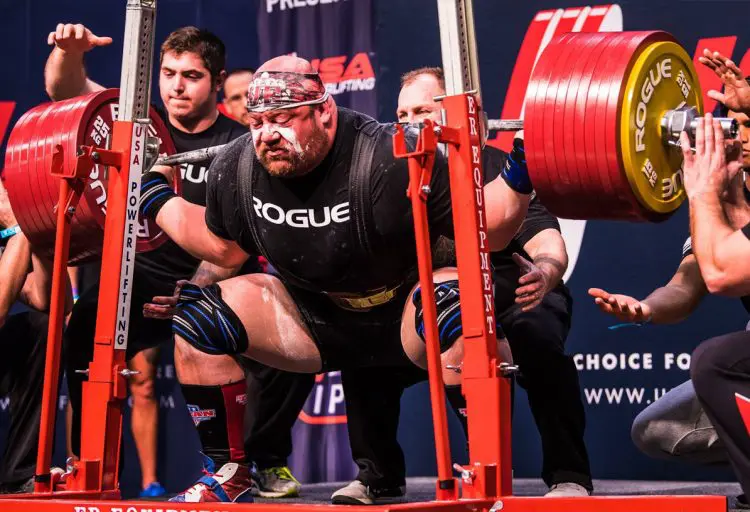
This is encapsulated perfectly by one study that found lower body compression to increase vertical jump performance but also determined that it had no effect on sprint capacity (1).
However, the findings of a second study are much more significant for the powerlifter. In this study, the authors of the study investigated the impact of compression shorts on squat performance.
Interestingly, the shorts appear to enhance proprioception which is the body’s awareness of its own positioning. The compression shorts served as neural feedback which allowed the lift to improve their technique.
Furthermore, improving proprioception appeared to have a positive impact on the lifter’s squat depth and drive out of the squat (2).
While the improvements seen with the compression shorts were small, they were still significant.
Therefore, tight-fitting compression clothing, such as a singlet, may be used to enhance proprioception and exercise performance. That said, more research is required on the topic.
Differences Between Wrestling and Powerlifting Singlets
Wrestling is another sport where singlets must be worn. This ensures that the referee can see illegal moves while also preventing competitors from grabbing onto clothing.
So, what exactly are the differences between a wrestling and a powerlifting singlet? And can you wear a wrestling singlet during powerlifting competitions?
In terms of design, manufacture, and materials used, wrestling and powerlifting singlets are practically the same. However, the majority of wrestling singlets do not align with powerlifting federation specifications.
This is because all powerlifting federations have stipulations in regards to singlet color, cut, and lengths.
Moreover, most good-quality powerlifting singlets provide additional protection to protect the singlet and the legs from the knurled barbell.
Wrestling singlets do not have this protection and, therefore, may be damaged more easily.
Technically, providing the wrestling singlet adheres to the federations specifications, you can wear one to a powerlifting competition. However, you’d be better off purchasing a quality powerlifting singlet.
Powerlifting Federations Singlet Guidelines
There are hundreds of different powerlifting federations worldwide with the International Powerlifting Federation (IPF) and US Powerlifting Association (USPA) being the most well-known.
Unfortunately, there is not a universal specification for singlets with each federation having a different set of rules for singlets.
Some of the rules relate to the amount of fabric that covers the body, singlet thickness, and whether it is considered “supportive” or “non-supportive”.
Failing to follow these rules will lead to disqualification and, therefore, you must check and adhere to the rules outlined by the federation you compete in.
A number of singlets on the markets are now manufactured to meet the regulations of the top powerlifting federations.
Some singlets may even come with an IPF-approved stamp to confirm that it can be used in IPF competitions.
Level Up Your Fitness: Join our 💪 strong community in Fitness Volt Newsletter. Get daily inspiration, expert-backed workouts, nutrition tips, the latest in strength sports, and the support you need to reach your goals. Subscribe for free!
Expect expert-backed workouts, nutrition advice, the latest in strength sports, and a whole lot of motivation heading your way.
Finally, the IPF has also provided a list of brands whose singlets have been approved for use in their competitions. These include brands such as Inzer, Titan, Metal, SBD, and Beast Genetics.
Raw vs Equipped Lifting
It should be noted that deadlift and squat suits can be used in the IPF and a number of other powerlifting federations, however, they differ from singlets.
These suits follow strict guidelines as they provide an even greater amount of support and consequently allow the lifter to shift a greater amount of weight (3).
Deadlift and squat suits cannot be used in “raw” events and are only permitted in “equipped” events.
Equipped competitions are simply events that allow for the use of performance-enhancing equipment.
This can cause some confusion as raw event competitors can be seen using knee sleeves, wrist straps, belts, and lifting shoes.
So, what is the difference between raw and equipped lifting?
While rules may differ from federation to federation, generally speaking, there are three pieces of equipment that would constitute an equipped event:
- Knee wraps
- Squat suits
- Deadlift suits
If you are considering entering an equipped event, there are even more rules and regulations that you must pay close attention to.
There are a variety of squat and deadlift suits that come in different sizes, lengths, and thicknesses. You must ensure that all of these factors must be considered when purchasing a suit.
Regardless of whether you are a raw or equipped lifter, every powerlifter will require a singlet. However, it’s important to recognize that singlets are not the same as squat and deadlift suits.
Additionally, you must take particular care when purchasing a singlet or suit, ensuring that it meets the specifications of your powerlifting federation.
Also read powerlifting rules.
The Pros and Cons Of Popular Powerlifting Singlets
This section will review a number of the most popular powerlifting singlets and provide a breakdown of their pros and cons.
1) Inzer Singlet
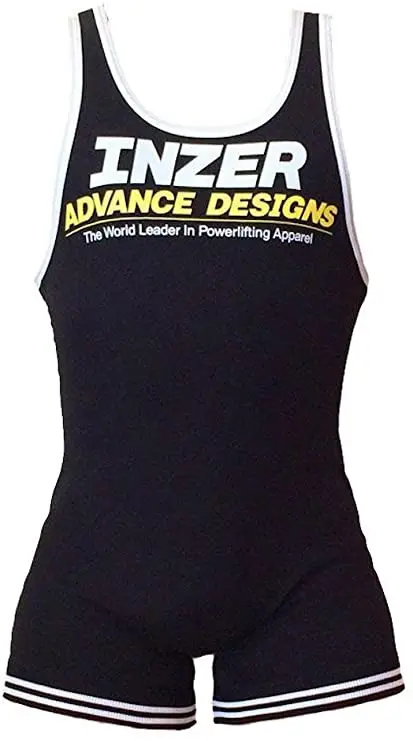
When it comes to quality powerlifting singlets, look no further than Inzer. Inzer singlets are commonly spotted at powerlifting competitions and have a reputation for being comfortable and highly durable.
Pros:
- High-quality singlet
- Available in a variety of colors
- Approved by the majority of federations
- Excellent singlet for both raw and equipped powerlifters
Cons:
- One-size fits all
- Modifications may be prohibited by certain federations
- Relatively expensive
2) Titan Singlet
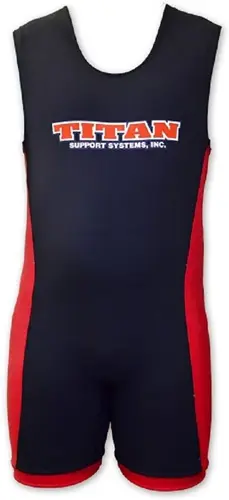
Whether you are an amateur or professional powerlifter, Titan singlets are the perfect combination of compression and flexibility.
Pros:
- Highly rated
- Available in a variety of colors
- Can be used in IPF competitions
- Two singlet styles to choose from – Classic or Triumph
Cons:
- May be too tight and compressive for some
- May not be the best fit for women
- Expensive
3) Iron Rebel Singlet
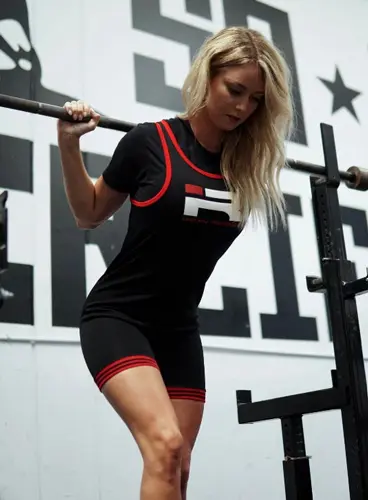
For those who are looking for a little more compression, consider purchasing a singlet from Iron Rebel.
Pros:
- Thick, high-quality material
- Durable
- Approved for use in IPF, USAPF, and USPA
Cons:
- May not be the best singlet for tall lifters
4) Nike Singlet
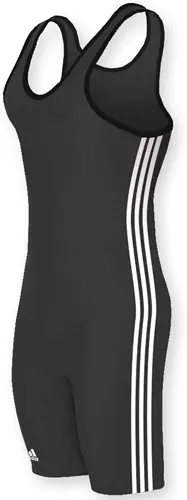
Nike’s reputation precedes them. Their high-quality singlet is made with a combination of polyester and nylon to promote comfort throughout.
Pros:
- Extremely durable
- Comfortable fit
Cons:
- Short leg length may not be suitable for particular competitions
- Primarily used for weightlifting rather than powerlifting
5) SBD Singlet
SBD is one of the biggest powerlifting gear companies in the world. Their singlet is simply one of the best on the market and is renowned for its excellent breathability and comfort.
Pros:
- High-quality singlet
- Great fit for both men and women
- Very comfortable and highly breathable
- Adapts and fits a number of different body types
Cons:
- Limited color choice
- Expensive
Two Highly Recommended Powerlifting Singlets For Women
As mentioned above, the SBD singlet is an excellent fit for both men and women. However, this is not always the case with powerlifting singlets.
Therefore, this section will highlight two specific singlets that, not only fit women well, but also provide comfort, durability, and quality.
1) Asics Singlet

For those who are new to powerlifting, the Asics singlet is a great place to start. Despite being relatively inexpensive, it does not sacrifice comfort or durability.
Pros:
- Selection of singlet cuts for women
- Relatively inexpensive
- Highly durable
- Can be used in IPF and USAPF
Cons:
- Knurling may damage fabric
- Low compression
2) Virus Singlet
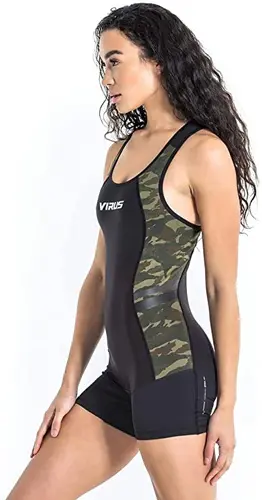
Another well-fitting singlet for women is the Virus singlet. While it provides a greater amount of compression than other singlets, it is still an extremely comfortable product.
Pros:
- High-quality singlet
- Great compression
- Rubberized grip to prevent singlet from riding up
Cons:
- Not approved by all federations
- Relatively expensive
Final Word
As highlighted, not only will selecting the wrong singlet potentially lead to disqualification, uncomfortable or poor-quality singlets can impair your performance.
As a powerlifter, it is imperative that you select a well-fitted, compressive singlet that meets the regulations set out by your powerlifting federation.
References:
1- McMaster, Daniel T.; Beaven, Christopher M.; Mayo, Brad; Gill, Nicholas; Hébert-Losier, Kim (2017-11-28). “The Efficacy of Wrestling-Style Compression Suits to Improve Maximum Isometric Force and Movement Velocity in Well-Trained Male Rugby Athletes”. Frontiers in Physiology.
2- Doan, Brandon K.; Kwon, Young-Hoo; Newton, Robert U.; Shim, Jaekun; Popper, Eva M.; Rogers, Ryan A.; Bolt, Lori R.; Robertson, Mike; Kraemer, William J. (2003-08). “Evaluation of a lower-body compression garment”. Journal of Sports Sciences.
3- Blatnik, Justin A.; Skinner, Jared W.; McBride, Jeffrey M. (2012-12). “Effect of supportive equipment on force, velocity, and power in the squat”. Journal of Strength and Conditioning Research.
Feel free to leave a comment below with any questions for Chris!
 You can also follow us on Twitter, Facebook, Instagram, and
YouTube for even more content.
You can also follow us on Twitter, Facebook, Instagram, and
YouTube for even more content.




